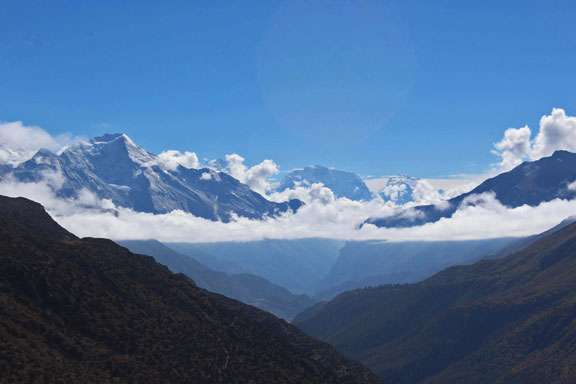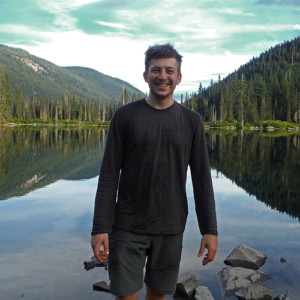
[/media-credit] The Annapurna Mountain Range, Nepal from the head of the Marsyangdi Valley.
EnviroGorge writer Azor Cole writes his thoughts about the ‘big one,’ the earthquake expected to impact virtually all of Oregon and Washington.
By Azor Cole. Oct. 3, 2016. Some friends and I recently decided to spend a few months backpacking in Nepal. We leave soon, and I’m a mixture of excitement and nerves. Why I’m excited is easy: a huge adventure romping through a backpacker’s paradise with great friends.
And the nerves? In 2015 a magnitude 7.8 earthquake shook Nepal, causing over 8,000 deaths and injuring many more. The quake triggered thousands of landslides, decimating anything and everything in their way. So, in between grand speculations of our impending views of snow-capped mountains and sun-kissed valleys, I sometimes find myself nervous.
Sitting in Seattle, writing this, I think ‘nerves’ make sense.
What I need to parse out is this: why am I not more concerned about the earth beneath my feet here? The Pacific Northwest is due for a massive earthquake. We sit on the Ring of Fire, a U-shaped congregation of volcanic arcs, oceanic trenches and plate movements. This formation is responsible for thousands of earthquakes every year. Most are unnoticeably small, yet a larger one looms ahead of us.
When I was in first grade in 2001, a 6.8 magnitude earthquake shook the greater Puget Sound region. We kneeled under the tables. Because I was not old enough to realize that it could have been much bigger, I wasn’t scared. Now that I understand this region’s tectonic danger, fear would make sense. Still, no fear.
That quake occurred on a section of the Ring of Fire, the Cascadia Subduction Zone—an area stretching from Northern California to Vancouver, British Columbia. This zone poses the gravest threat to the Pacific Northwest. In an article for The New Yorker, Kathryn Shulz details the danger. Here, the Juan de Fuca Plate slips beneath the North American Plate. Instead of sliding smoothly, the plates are stuck. At some point, this they will suddenly and violently let go.
It’s easy to be brave in the face of disaster when that disaster is not time bound: sometime, someday. Until recently, I saw the impending earthquake beneath my home soil as unimaginably distant.
Chris Goldfinger, the chief scientist on the issue and Oregon State Geology and Geophysics professor, makes the real seem real. He estimates that the chance of an 8.0 to 8.6 magnitude earthquake happening in the Pacific Northwest in the next 50 years is one in three, and the chance of an 8.7 to 9.2 magnitude earthquake is one in ten.
This sounds devastating. Is devastating. Yet, I’m not worried.
Why’s that?
Both time and space play a role. Images from the 2015 Nepal earthquake are fresh in my mind. I’m a visual person, so even in the face of scientific predictions about the danger to my home town, I can’t fully picture, and can’t fully feel what rationally I should.
The second, and in my opinion more interesting force here, is space. I’ve spent the better part of 22 years here in Washington. I’ve never been to Nepal. It’s foreign to me. Edward Said, a prominent Palestinian scholar, is known for coining the term ‘Orientalism,’ which describes the Western-imposed division between the ‘East’ and the ‘West.’ This problematic division contributes to a Euro-centric ‘othering’ of anybody not Western European. With this mindset, diverse groups of people are reduced to generalized stereotypes. This ‘other’ is something to be feared; it is unknown and dangerous.
In school, it was easy for me to see the danger of these politically manufactured divisions. They don’t really exist, and are meant to create racial and spatial superiority. But here I am, afraid of earthquakes in one country, but not the other.

Azor Cole
I take solace in realizing this, but am still working on a conclusion. Should I become afraid of the West Coast or lose my fear of Nepal? Of this, I’m not sure. What I do know is that to fear one but not the other is flawed. Emotions are powerful feelings, but to turn them into reasoning without fact is lazy and perpetuates a naive, distorted view of the world.
It’s been a typical drizzly day in Seattle. Just now the clouds are beginning to disperse and as the sun peeks through, I feel clear-headed and ready for this next adventure.





